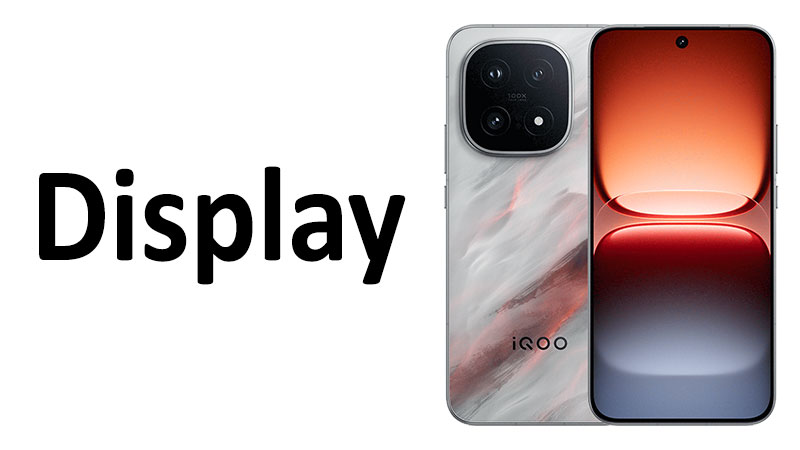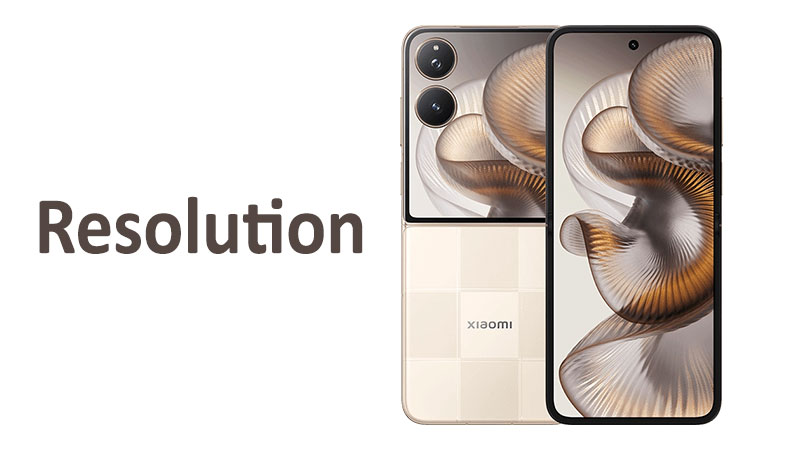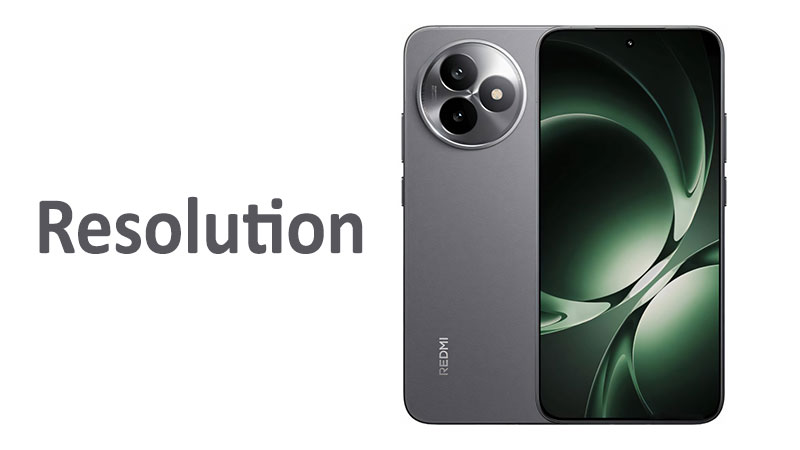The vivo iQOO 15 display represents a significant advancement in mobile screen technology. This premium component offers flagship specifications designed for demanding users. It particularly targets mobile gamers and media enthusiasts. This article provides a comprehensive review of the screen’s features and quality. We will examine its technology, resolution, and extreme brightness capabilities. Furthermore, we will compare it to its predecessor and current competitors. This detailed analysis helps potential buyers understand the iQOO 15’s true display performance.
A Comprehensive Look at the vivo iQOO 15 Display Specifications
The iQOO 15 screen boasts a powerful set of specifications. These numbers place it at the absolute pinnacle of current smartphone display technology. Understanding these core metrics reveals the phone’s visual potential.
The panel type is LTPO AMOLED. This modern technology is highly efficient and flexible. It supports 1 billion colors, ensuring stunning visual fidelity. The refresh rate is ultra-smooth at 144Hz. This provides fluid motion for all content.
The screen size is a massive 6.85 inches. This expansive display is perfect for immersive media. Its screen-to-body ratio is impressive at approximately 90.7%. The resolution is incredibly sharp at 1440 x 3168 pixels.
Brightness levels are market-leading. Typical brightness reaches 1000 nits. High Brightness Mode (HBM) delivers 2600 nits for outdoor viewing. Its peak brightness is an astonishing 6000 nits. The panel also supports advanced high dynamic range formats. These include Dolby Vision, HDR10+, and HDR Vivid.
The LTPO AMOLED Panel: Efficiency Meets Excellence
The vivo iQOO 15 utilizes an advanced LTPO AMOLED panel. LTPO stands for Low-Temperature Polycrystalline Oxide. This technology is a cornerstone of modern high-end smartphone displays. It provides superior power efficiency compared to standard AMOLED or OLED screens.
The main benefit of LTPO is variable refresh rate control. The screen can seamlessly scale its refresh rate. This dynamic adjustment ranges from as low as 1Hz to the maximum 144Hz. This flexible scaling is vital for battery longevity. For instance, when you view a static image, the screen drops its refresh rate to 1Hz. This saves a massive amount of energy compared to fixed-rate displays.
Specialized Comparisons (LTPO Efficiency)
The LTPO panel technology is a crucial upgrade over older screen types. Traditional AMOLED screens use rigid switching mechanisms for the refresh rate. This limits their ability to conserve battery power effectively. The iQOO 15’s newer LTPO generation improves on this flexibility.
The iQOO 12 also featured LTPO. However, newer versions often improve the transition speed and overall energy savings further. This makes the iQOO 15 more efficient. Competitors like Samsung and Apple also rely on LTPO for their flagship models. The iQOO 15’s implementation ranks among the best in the market today. It perfectly balances smoothness and power efficiency. This ensures users get the best of both worlds.
Resolution and Pixel Density: Crisp 1440p Clarity
The iQOO 15 features a sharp 1440 x 3168 pixels resolution. This high resolution is often referred to as 2K or Quad HD+. The resolution sits on the large 6.85-inch display. The resulting pixel density is approximately 508 pixels per inch (ppi).
Significance of 508 PPI
A density of 508 ppi guarantees exceptional image sharpness. Individual pixels become virtually impossible to distinguish at normal viewing distances. Text is extremely crisp on the screen. Details in high-resolution images and videos appear perfectly clear. This high clarity contributes significantly to the overall viewing quality. The effect is particularly noticeable when viewing intricate graphics or tiny text.
Comparison to Predecessors and Rivals
Some previous iQOO models, like the iQOO 12, adopted a slightly lower resolution. They often used 1.5K resolutions, such as 1260 x 2800 pixels. This was done to balance power consumption and perceived sharpness. The iQOO 15 returns to the higher 1440p standard. This move appeals to users prioritizing maximum visual fidelity.
This higher resolution ensures that the large 6.85-inch size is fully utilized without any visual compromises. Flagship rivals sometimes choose a slightly lower resolution for better battery life. However, the iQOO 15’s combination of 1440p and LTPO offers both high fidelity and improved efficiency. This makes it a strong contender for demanding users.
Hyper-Fast 144Hz Refresh Rate for Ultimate Smoothness
The vivo iQOO 15 display boasts a stunning 144Hz refresh rate. This means the screen refreshes 144 times every single second. This high frequency delivers incredibly smooth motion rendering. It offers a noticeable improvement in the general user experience. Scrolling through menus and social media feeds feels fluid and instantaneous.
Gaming Performance Focus
This 144Hz rate is especially critical for serious mobile gaming. Many high-end games now support frame rates above 60 frames per second. The iQOO 15 unlocks the full potential of these demanding titles. Players gain a competitive advantage in fast-paced games. They can react quicker due to reduced motion blur. This high refresh capability positions the iQOO 15 as a dedicated gaming phone screen. Furthermore, the display’s touch sampling rate is also highly optimized. This ensures minimal input lag for professional gaming sessions.
The combination of LTPO and 144Hz is powerful. It allows the phone to run games at peak performance when needed. It then conserves power by dropping the rate when the user is idle. This intelligent management maximizes both performance and efficiency.
Comparison with 120Hz Standards
Many top-tier flagship phones cap their refresh rate at 120Hz. While 120Hz is already excellent, 144Hz offers an extra margin of smoothness. The jump from 60Hz to 120Hz is dramatic and easily visible. The increase from 120Hz to 144Hz is more subtle but highly valued by gaming enthusiasts. It solidifies the iQOO 15’s commitment to peak gaming performance. This specification sets it slightly ahead of standard flagship models in the gaming space. The difference is measurable, even if not always obvious to the casual eye.
Extreme Brightness Metrics Explained
The vivo iQOO 15 screen boasts impressive brightness figures. Understanding these numbers is essential for buyers. The typical brightness is rated at 1000 nits. High Brightness Mode (HBM) reaches 2600 nits. The advertised peak brightness hits an astonishing 6000 nits.
Nits and Daily Use
A nit is a measure of luminance, or brightness. The 1000 nits typical brightness is excellent for indoor use. It provides clear visibility in most indoor lighting conditions. This sustained brightness level is comfortable for daily activities like reading and browsing. This is a high baseline brightness compared to many mid-range phones.
HBM for Outdoor Visibility
The 2600 nits HBM (High Brightness Mode) is the critical figure for outdoor use. The phone engages HBM automatically when detecting direct sunlight. This high luminance level ensures the screen remains perfectly readable outside. You will not struggle to see messages or navigation even on the brightest days. This HBM level competes directly with the best flagship screens from any manufacturer. It provides real-world usability benefits.
The 6000 Nits Peak Metric
The 6000 nits peak brightness is a specific metric. It does not represent the full screen’s maximum output. Instead, it refers to the brightness achieved in a very small area of the screen. This maximum spike occurs when displaying High Dynamic Range (HDR) content. It is typically a tiny, bright highlight in a dark scene.
While impressive, this number primarily showcases the panel’s technological capability. It is more a sign of advanced engineering than a measure of daily brightness. The number contributes significantly to the dazzling effect of certified HDR content. It provides intense contrast and sparkle that makes media consumption captivating. Consumers should focus more on the 2600 nits HBM for general outdoor use.
HDR and Color Fidelity: A Feast for the Eyes
The iQOO 15 display supports multiple high dynamic range standards. These include Dolby Vision, HDR10+, and HDR Vivid. Support for these formats ensures a superior media viewing experience. HDR technology expands the difference between the lightest and darkest colors. This results in more vivid images and greater depth.
Advanced HDR Support
Dolby Vision and HDR10+ use dynamic metadata. This means the picture quality is optimized scene-by-scene. The iQOO 15’s powerful brightness capabilities perfectly complement these standards. True blacks and dazzling highlights create a captivating contrast. This makes movies and TV shows look exactly as the creators intended. The inclusion of HDR Vivid is often specific to the Chinese market. It indicates a push for high-quality video playback across various regional platforms. The display truly supports a wide variety of premium content.
1 Billion Colors and Wide Gamut
The panel is capable of displaying 1 billion colors. This specification ensures incredibly smooth color gradients. It effectively eliminates color banding, especially in high-contrast scenes like sunsets. Colors appear accurate, rich, and vibrant. This level of color fidelity is crucial for content creators and dedicated media enthusiasts. The vivo iQOO 15 display truly excels in visual richness and accuracy. It covers wide color gamuts, making the colors pop without looking oversaturated.
Eye Comfort and Pulse Width Modulation (PWM)
Many users are concerned about eye comfort, especially with AMOLED displays. OLED screens often use Pulse Width Modulation (PWM) for dimming. PWM involves rapidly flickering the screen to adjust perceived brightness.
Flicker and Eye Strain Mitigation
Low-frequency flicker can cause eye strain, fatigue, and headaches for sensitive individuals. To counteract this, manufacturers use high-frequency PWM. The iQOO 15 utilizes an advanced, very high-frequency PWM dimming solution. While the specific frequency is not always stated, comparable high-end models, like the iQOO 12, featured a 2160Hz PWM rate. The iQOO 15 likely matches or exceeds this high standard.
A PWM rate above 1000Hz makes the flicker imperceptible to the vast majority of human eyes. This significantly reduces potential eye strain. This focus on high-frequency dimming is a major benefit for users. It makes the screen comfortable to use for extended periods, especially in low-light environments. This attention to eye health is a key selling point for the iQOO 15 screen review. It shows the manufacturer is prioritizing user comfort.
Pros and Cons of the iQOO 15 Display
The vivo iQOO 15 screen offers many advantages. However, like any technology, it has a few minor drawbacks. A balanced view is important for a complete purchase decision. We must consider all aspects of the design.
Display Pros: Leading the Industry
The visual smoothness is outstanding due to the 144Hz refresh rate. This offers a premium experience over standard 120Hz screens. The LTPO technology provides excellent dynamic refresh rate scaling. This results in superior, intelligent battery life management. It boasts a very high resolution of 1440p. This delivers exceptional sharpness and detail at 508 ppi.
Outdoor visibility is guaranteed by the impressive 2600 nits HBM. This is a critical factor for daily usability. The 6000 nits peak brightness enhances HDR content playback dramatically. This creates dazzling media moments. The screen supports leading HDR formats. These include Dolby Vision and HDR10+. Eye strain is minimized by the high-frequency PWM dimming solution. The large 6.85-inch size creates an immersive viewing and gaming experience. The thin bezels contribute to a high 90.7% screen-to-body ratio.
Display Cons: Minor Trade-offs
The extreme 1440p resolution consumes more battery power overall. This is true even with the LTPO technology compensating for it. The very large 6.85-inch size may be difficult for some users to handle with one hand. People with smaller hands might find the phone unwieldy. The 6000 nits peak brightness is often a marketing metric. It is only achieved in tiny screen areas during HDR playback. The high-frequency PWM dimming, while effective, might still affect the most extremely sensitive users. DC Dimming alternatives are sometimes preferred for zero flicker in absolute low light.
Buyer’s Perspective: What You Need to Know
The iQOO 15’s display is engineered for two primary audiences. These are serious mobile gamers and premium media consumers. Buyers must understand the features relative to their specific usage. This ensures a happy purchase decision.
Prioritization for Gaming
Gamers will instantly notice the 144Hz smoothness. This refresh rate, paired with the large size, makes gaming exceptional. The ultra-low latency response is a professional-grade feature. This makes the iQOO 15 a highly competitive choice in the dedicated gaming phone market. The clarity of the 1440p screen also helps identify distant targets in games. The sheer speed of the panel ensures zero ghosting or smearing during quick movements.
Media Consumption Experience
If you watch a lot of movies and high-quality videos, this screen is fantastic. The Dolby Vision support is especially valuable for compatible streaming services like Netflix and Disney+. The vibrant 1 billion colors and deep blacks inherent to AMOLED technology create cinematic visuals. The high brightness also ensures enjoyable viewing even near a sunny window or outdoors. The large size is ideal for sharing content with a friend.
Battery and Performance Management
The display is highly efficient thanks to LTPO technology. However, running the screen constantly at 144Hz or high brightness will still drain the battery quickly. The user can often switch the refresh rate to 60Hz or 120Hz manually for better endurance. The phone’s automatic mode generally handles the balance well for most users. This intelligence is a key part of the display’s design.
The Competition Context and Value
The vivo iQOO 15 display competes directly with the best on the market. It often surpasses rivals in refresh rate and peak brightness figures. Competitors often stick to 120Hz. The iQOO 15 uses its 144Hz to create a powerful differentiating feature. This positions the device as a performance leader in the display category. It offers superior visuals for those who demand the very best screen technology. This feature set makes the iQOO 15 a compelling value proposition.
Conclusion
The vivo iQOO 15 display is an industry-leading component. It successfully blends cutting-edge LTPO technology with user-centric features. The foundation is the power-efficient LTPO AMOLED panel. This ensures that the extreme performance does not destroy the battery life.
The 6.85-inch size, combined with the sharp 1440p resolution, delivers excellent immersion. The resulting 508 ppi density provides flawless visual clarity. For competitive mobile gaming, the 144Hz refresh rate is a game-changer. It offers fluidity that few other phones can match in this class.
Furthermore, the display is a champion of brightness. The 2600 nits HBM ensures perfect outdoor use. The 6000 nits peak metric highlights its impressive HDR capabilities. Media playback is stunning, thanks to support for formats like Dolby Vision. Finally, the use of high-frequency PWM dimming addresses crucial eye health concerns. This makes the screen comfortable for prolonged usage.
Buyers seeking the absolute pinnacle of smartphone screen technology should consider the iQOO 15. This phone delivers a world-class visual experience for both gaming and multimedia consumption. The display alone justifies its position as a top-tier flagship device. It offers concrete advantages over many competitors, especially in speed and brightness. The iQOO 15 provides a comprehensive, no-compromise visual platform.
FAQ
Is the vivo iQOO 15 display good for professional gaming?
Yes, absolutely. The display features a very high 144Hz refresh rate. This speed is crucial for reducing motion blur and improving responsiveness in fast-paced games. The large 6.85-inch size also aids immersion. It is built with gamers in mind.
What does LTPO AMOLED mean for daily battery life?
LTPO means Low-Temperature Polycrystalline Oxide. It allows the screen to dynamically change its refresh rate. For example, it can drop to 1Hz when the screen is static. This efficient scaling significantly reduces power consumption, saving battery life.
How bright is the iQOO 15 display in typical use?
The typical brightness level is 1000 nits. This is an excellent figure for indoor viewing. For outdoor use in direct sunlight, the High Brightness Mode (HBM) can reach an impressive 2600 nits. This HBM figure is the most important for outdoor readability.
What is the benefit of the 1440 x 3168 pixel resolution?
This resolution, combined with the screen size, creates a high pixel density of 508 ppi. This density ensures that images, text, and video details appear extremely sharp and perfectly clear. It offers superior clarity compared to a standard 1080p display.
Does the screen flicker, and is it safe for my eyes?
The display uses PWM dimming to control brightness. However, it uses a very high PWM frequency (likely above 2000Hz). High-frequency PWM minimizes visible flicker. This design choice aims to provide a more comfortable viewing experience for eye health, especially in low light.



